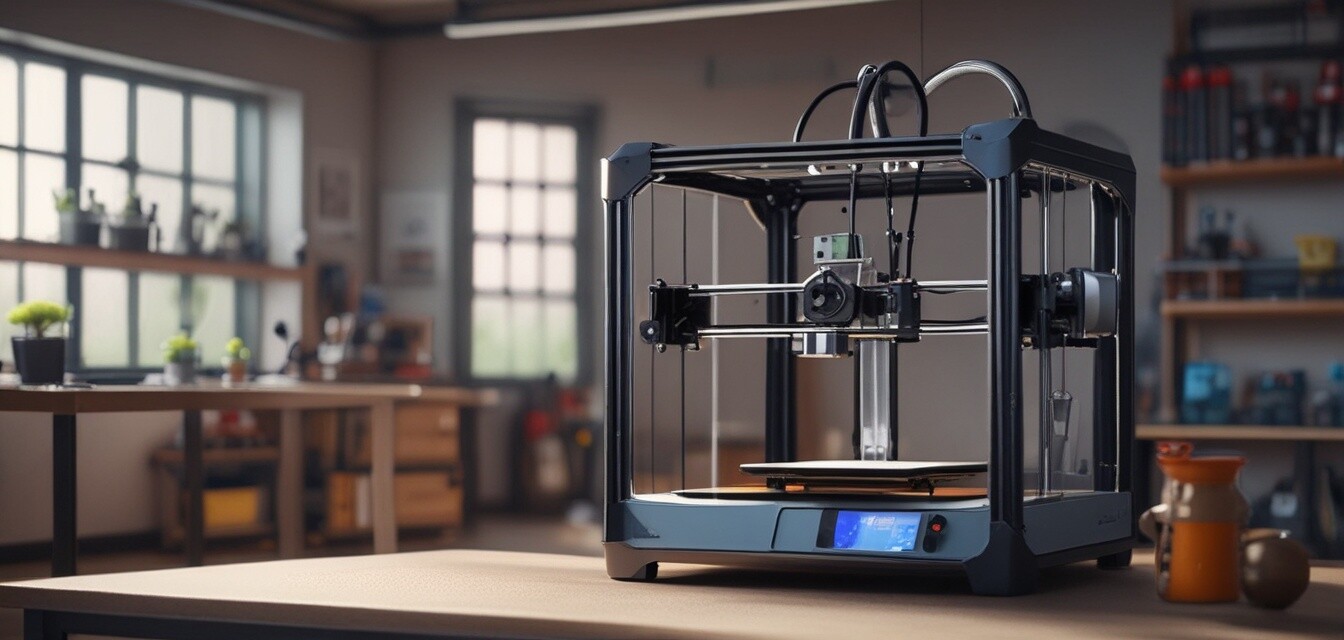
How to choose the best 3D printer for your needs
Key Takeaways
- Understand your budget and intended usage before choosing a printer.
- Consider the different types of 3D printers available.
- Look for essential features like build volume, print speed, and material compatibility.
- Evaluate customer reviews and ratings to gain insight into reliability.
- Take note of additional accessories and materials you'll need for operation.
Choosing the right 3D printer can be an overwhelming task, especially with the numerous options available on the market today. This guide aims to simplify your decision-making process by outlining essential factors to consider based on your user requirements, budget, and intended applications. Whether you are a beginner or experienced user, understanding these key aspects can help you invest in a printer that meets your needs.
Types of 3D Printers
3D printers come in various types, each with its own unique features and capabilities. Here’s an overview of the most common types:
| Type | Printing Technology | Best For |
|---|---|---|
| Fused Deposition Modeling (FDM) | Extrudes melted thermoplastic | Beginners and low-cost projects |
| Stereolithography (SLA) | Uses UV light to cure resin | High-detail models and prototypes |
| Selective Laser Sintering (SLS) | Uses lasers to fuse powdered material | Strong functional parts and complex geometries |
| Digital Light Processing (DLP) | Similar to SLA but uses a projector | Fast, high-quality resin prints |
Choosing Based on User Needs
Understanding your specific needs is critical in the selection process. Here are some key questions to ask yourself:
- What will you primarily be using the printer for? (hobbies, professional prototyping, etc.)
- What is your budget for both the printer and the materials?
- How often do you plan to use it?
- Do you require specific material compatibility?
Key Features to Look For
There are several important features to consider before making your purchase. Here’s a detailed list:
| Feature | Description |
|---|---|
| Build Volume | The maximum dimensions of the object you can print. |
| Print Speed | How fast the printer can produce an object. |
| Material Compatibility | The types of filament or resin the printer can use. |
| Ease of Use | User-friendly features like touchscreen controls and simple setup. |
| Maintenance | How easy it is to clean and maintain the printer. |
Budget Considerations
Your budget will greatly influence your options. Here’s a basic idea of pricing:
- Entry-level printers: $200 - $500
- Mid-range printers: $500 - $1500
- Professional printers: $1500 and up
Evaluating Customer Reviews
One of the best ways to gauge the performance and reliability of a printer is by checking customer reviews and ratings. Look for:
- Pros and cons shared by users.
- Common issues experienced by customers.
- Responses from manufacturers regarding complaints.
Websites such as Three Depth have detailed customer reviews which can aid you in making an informed choice.
Essential Accessories and Materials
After selecting your printer, don’t forget essential accessories and materials, such as:
- Filament or resin specific to the printer type.
- Build surface or heated bed to improve print adhesion.
- Cleaning tools for maintenance and upkeep.
Conclusion
Investing in a 3D printer requires a good understanding of your needs, preferences, and budget. By considering the different types of 3D printers available, key features, customer feedback, and necessary accessories, you will be well-equipped to find the best printer for your specific requirements. To further assist you with your 3D printing journey, make sure to check out our additional guides on buying guides for more information.
Pros
- A wide range of 3D printers to fit various needs and budgets.
- Potential for creative projects and prototyping.
- Growing community support and resources for users.
Cons
- Initial setup can be complex, depending on the model.
- Ongoing costs for materials and maintenance.
- Quality can vary significantly between brands and models.

